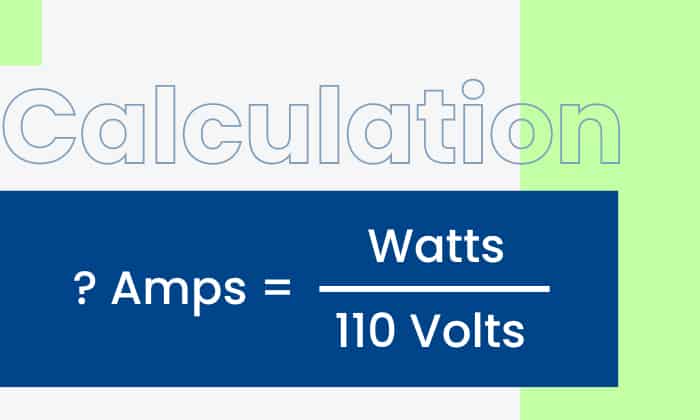Understanding the fundamental aspects of electricity is essential for the safety and efficiency of power usage, especially when our modern world is filled with various electrical devices. For instance, understanding how many amps in 110 volts outlets provides valuable insights into the device number you can safely operate.
In general, the actual current drawn by an outlet primarily hinges on the power rating of the device employed within a circuit. However, the total amp rating of connected devices must not exceed 80% of the circuit breaker, which ranges from 12-16A.
To understand more, let’s explore this topic in greater detail below.
Table of Contents
How Many Amps Can a 110 Outlet Handle
In general, a 110-volt circuit typically comes in two common circuit breaker ratings: 15 amps and 20 amps. These are designed for low-powered devices and typical home appliances, such as TVs, radios, small refrigerators, and more.
However, it’s essential to note that each circuit can safely draw current at approximately 80% of its circuit breaker rating, meaning:
- A 110-volt circuit with a 15-amp breaker can safely handle a load of 12 amps
- A 110-volt circuit on a 20-amp breaker can handle 16 amps.
The actual current drawn from a 110-volt wall outlet depends on the power rating of the device connected to it. The circuit’s amperage rating does not necessarily dictate the current draw; it’s contingent on the current requirements of the appliances used.
How to Calculate
To determine the actual current draw of a 110v outlet, you must first consider your device’s power rating. Then, you can use the formula below to calculate the device’s amp rating:
\[ \text{Amps} = \frac{\text{Watts}}{\text{Volts}} \]
For example, you have a 55-inch UHD TV with a power rating of 120 watts. Using the formula above, we can calculate:
\[ \text{Amps} = \frac{120}{110\,\text{V}} = 1.09\,\text{A} \]
This implies that a 120-watt 55-inch UHD TV consumes just 1.09 amps of current, comfortably staying well below the circuit’s maximum capacity.
While you can connect additional appliances to the same fcircuit, it’s crucial to exercise caution and ensure that you stay within the circuit’s 80% current threshold.
Alternatively, you can use online volts to amps converter for quick and accurate amp rating conversions.
Common Appliances and Their Amperage Ratings
To gain insight into the current requirements of your various appliances, here’s a list of common household devices along with their average amps ratings.
| Appliances | Average Amp rating |
| Television | Up to 4 amps |
| Light Bulb | Up to 1.5 amps |
| Desk Lamp (60 watts Incandescent Bulb) | Less than .5 amp |
| Desk Lamp (LED Bulb) | Less than .5 amp |
| Refrigerator | 5 to 8 amps |
| Microwave Oven | 6.5 amps |
| Blender | 5 to 6 amps |
| Oven Toaster | 8 to 10 amps |
| Coffee Maker | 5 to 8 amps |
| Hair Dryer | 10 amps |
| Vacuum Cleaner | 7 to 9 amps |
| Desktop Computer | 1.3 amps |
| Laptop | Up to 3 amps |
| Phone Charger | Less than .5 amp |
| Electric Fan | Up to 6 amps |
| Space Heater | 7 to 13 |
| Dishwasher | 10 amps |
| Washing Machine | 10 amps |
| Water Heater | Up to 13 amps |
Conclusion
Understanding how many amps in 110 volts is helpful when using your appliances safely and efficiently. By grasping the relationship between power, voltage, and amps, you can make informed decisions about your electrical devices’ current draws.
It’s important to note that a 110-volt circuit possesses a specific current limit that can be distributed among multiple standard outlets connected to it.
Therefore, evaluating the amp rating of your appliances before plugging them into standard outlets serves as a preventive measure against circuit overloads, safeguarding your devices from potential damage.

I am Edwin Jones, in charge of designing content for Galvinpower. I aspire to use my experiences in marketing to create reliable and necessary information to help our readers. It has been fun to work with Andrew and apply his incredible knowledge to our content.


